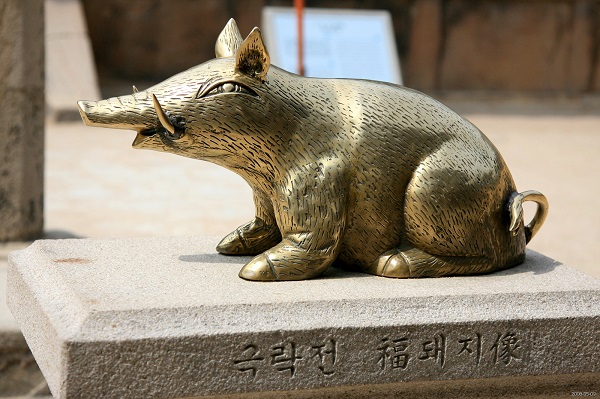China’s Year of the Pig turns sour
April 12, 2019 | Expert Insights

Background
China is the second largest economy in the world after the USA and as a hub for the manufacturing industry, China is the fastest growing economy. Certain forecasts estimate that China’s GDP growth will overtake America’s GDP in another 10 years after posting economic growth of over 10% for 30 years. The International Monetary Fund endorsed China's Yuan as a reserve currency - putting it in an elite club. In recent years, China’s exponential growth has come at the cost of increased debt. According to statistics, its debt is more than 250% of the GDP and is much higher than the US. Experts have said that if China’s trajectory continues, then it will be looking at an economic slump sooner than later.
US President Donald Trump has been a vocal critic of China. He blamed the country for loss of jobs within the US and has often criticised the US trade deficit with China. The resulting trade war saw the US imposing tariffs on $200 Billion worth of Chinese exports, while Beijing responded with tariffs worth $59 billion on key US agricultural exports such as soybeans.
Analysis
Recent data has shown that China’s consumer price inflation (CPI) rose 2.3% for the month of March 2019, as compared to February’s figure of 1.5%. China’s National Bureau of Statistics (NBS) has blamed China’s African swine fever (ASF) epidemic, in addition to price adjustments in the refined oil sector.
During the Chinese Year of the Pig, China, the world’s largest consumer of pork and home to over half the world’s pigs, has struggled to contain the spread of the ASF virus. Analysts have argued that the outbreak is far worse than initially reported, with recent reports finding the virus in frozen pork dumplings. The first signs of ASF in China were in the country’s northeastern province of Liaoning in August 2018. China has since identified over 100 outbreaks in 25 of the country’s total 34 provincial-level administrations, as per data released by the UN’s Food and Agricultural Organization. Of China’s 430 million hogs, over one million have been culled. Medical researchers have yet to develop a vaccine to prevent and halt the spread of the ASF virus. Estimates by the NBS indicates that pork prices have risen by 5.1% compared to last years data, contributing 0.12 percentage point increases to the CPI.
In light of the European Union’s decade-long struggle to eradicate the ASF virus from swine populations since its discovery in Georgia in 2007, it is unlikely that China maintains the public health architecture to tackle such a risk. This could mean that China will continue to struggle to tackle the issue, potentially exacerbating its economy and its CPI. In addition, local swine farmers have been affected by rising US-China tensions, because of which feed costs have dramatically increased. Analysts have estimated that due to the nature of how hogs are raised, supply chain factors will result in pork prices peaking in January 2020, potentially indicating troubled times ahead for China’s CPI.
However, the NBS’s choice to highlight the ASF and externalities such as the global trade in the refined oil sector is suspicious. NBS data also shows that gains in fresh vegetable prices, health care, culture and education has also resulted in gains to the CPI. This indicates that Chinese authorities wish to portray China’s economy as healthy. However, other indicators such as the producer price inflation (PPI) rose 0.4% in March. Although this is an improvement on February’s figures of 0.1%, which sits close to the deflationary boundary, the easily fluctuating nature of the data spells continued economic weakness for China.
Assessment
Our assessment is that increases to China’s CPI are a result of a number of factors, not just its ASF epidemic and externalities such as rising oil prices. We believe that the trade war with the United States aggravates China’s current economic situation, including the effects of the ASF epidemic. We feel that should oil prices decrease, China’s PPI is likely to lower towards the deflationary boundary, while impending rises to China’s pork prices will further drive up its CPI. Should its PPI cross into negative territory, we believe China will struggle to attract the investment it needs, especially in light of the trade war. We also believe that China will struggle to tackle its ASF epidemic, while still providing for consumer demand.
Image Courtesy: Junho Jung at Flickr from South Korea [CC BY-SA 3.0]








Comments